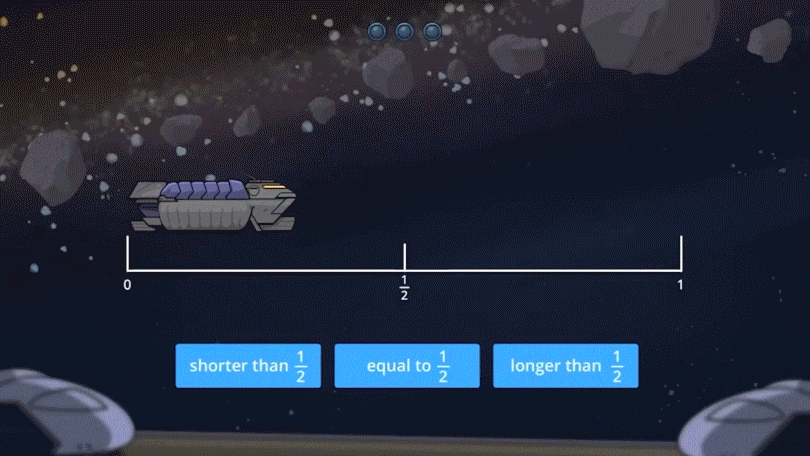- Home
- Success Stories
- Success Story Article
How Reflex and Frax Drive Math Success in Diverse Classrooms

Sometimes, the student teaches the teacher. That’s precisely what happened when Dr. Gina DiTullio first learned about ExploreLearning Reflex and Frax from a student who had recently moved to her district. “She told me about a great math program that helped her to learn her math facts. When I looked into it, I was excited to see how well the program was designed and what the white papers said about the increase in math scores. I decided to pursue a pilot since our school district didn’t have a subscription,” said Dr. DiTullio. “We used Reflex in grades 2-6, and the kids loved it! We saw them really getting good at their facts and LOVING the program. Additionally, Frax was also a hit with the kids. The teachers saw carryover in the math block when they were teaching fractions.”
From classroom teacher to principal: Dr. DiTullio’s journey in math education
Dr. DiTullio started her career as an elementary school teacher in grades 4, 5, and 6. “I left the classroom to take an elementary mathematics specialist position, in which I was responsible for interpreting our performance data, coaching teachers, providing math professional development for teachers, and math intervention to students K-6,” she said. “I left that position to become an assistant principal at a special education school. After receiving my doctorate, I returned to the Rochester City School District, Rochester, NY, as the principal of Austin Steward Elementary School #46. I have been the proud principal here for the last five years.”
Meeting diverse learning needs through math fact fluency
“We have about 350 students from diverse backgrounds,” said Dr. DiTullio. “Because we have such a diverse population, the challenges that our students face are also very diverse. We have had students who really struggle with learning the math content because they are spending so much of their cognitive load on remembering their facts. Since we have such a diverse population, we have a wide range of levels, too. This means that every teacher has to differentiate for students.”
Dr. DiTullio noticed that students were learning their facts, which meant they were freeing up working memory. This creates room for advanced problem-solving. She also saw a growth in confidence.
Increasing math proficiency with Reflex and Frax
“We have historically been lower performing in mathematics at this school, predating my tenure as principal. Since we have implemented Reflex and Frax, we have seen really nice progress in math proficiency both in the core instructional block and on the NYS Mathematics test,” said Dr. DiTullio. “When students can focus more energy on problem-solving and understanding the mathematics, they can learn better. I firmly believe that Reflex and Frax have played a large role in the growth that we have seen, and I expect this year, we will show even more growth overall in math,” she said.
The school uses iReady, student work, and NYS test data to monitor student growth, which shows an overall increase in students’ math ability. “I do attribute it at least in part to Reflex and Frax. Instead of getting stuck constantly with trying to figure out their facts, the automaticity has allowed them to spend more mental energy on solving problems, learning the math vocabulary, engaging in math discourse, and just overall increased engagement during the math core instructional block,” said Dr. DiTullio.
After using another program, Dr. DiTullio noticed that there were “so many options in that program that it was difficult to dial the kids into just the fluency pieces.” Reflex allows students to work on exactly what they need when they need it and builds fluency. “Also, Frax does a MUCH better job of building a conceptual understanding of fractions, which we have seen carry over to the core instructional block,” she said.
Reflex and Frax make math fun and effective for every student
Dr. DiTullio tracks usage but leaves it up to teachers to decide where to fit Reflex into the schedule. For some, that might be a morning activity as students come in and eat their breakfast. Others use the program during the math intervention block as a center activity or at the end of the day.
The kids love it, too. “They are willing to jump on and get those Green Lights every day without any prompting or prodding from teachers,” said Dr. DiTullio.

“Reflex is a game that lets you learn about math. I 100% love it! It’s fun. It has games you are able to get. If you lose, you can play it again. That’s what is fun about it. I’ve learned a lot that I haven’t learned before!”
-Nicholas“I really like Reflex because it helps me with my math skills. It’s helping me to get better at subtraction. The games help me know more math facts, and they tell me how I’m doing. I’m doing a lot better. I also think it’s fun.”
-EllieIf you’re ready to hear the same kinds of quotes from your students, take some time to explore Reflex (for math fact fluency) and Frax (for fractions). Free trials are waiting for you.

Dr. Gina DiTullio has been in education for 29 years, currently serving as the principal of Austin Steward Elementary School #46 with the Rochester City School District, Rochester, NY, for the last five years. After starting her career teaching in elementary grades 4, 5, and 6, she left the classroom for an elementary mathematics specialist position. Dr. DiTullio interpreted performance data, coached teachers, provided math professional development for teachers, and delivered math intervention to K-6 students. She earned an Ed.D. in executive leadership at Saint John Fisher College School of Education.
You might also like these stories...


